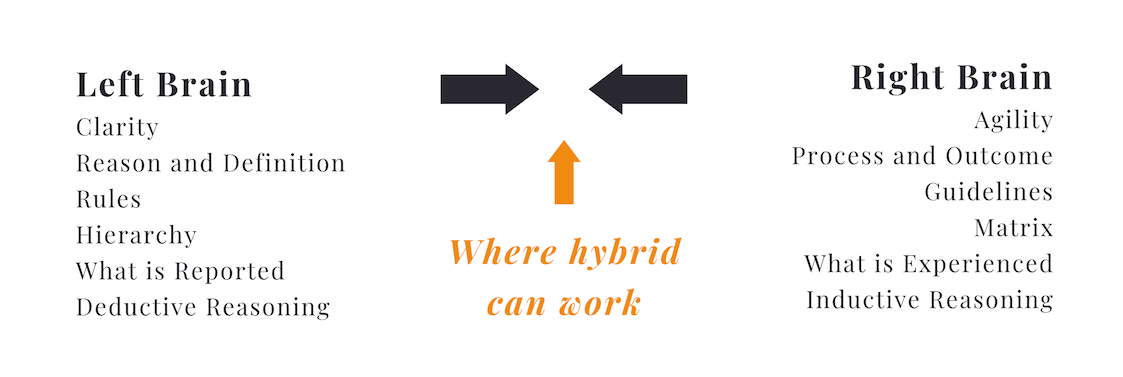The Hybrid Double Bind
Why is it so difficult to find an ideal answer?

As we move to design new ways of working in a post-pandemic, video call-enabled world, we are fighting against a fundamental personality difference, and it’s not the most obvious one.
Tendencies toward introversion and extroversion create preferences for interpersonal contact, with more extroverted people needing to think out loud and more introverted types needing more reflective time, but hybrid working can clearly work for both. As we approach the challenges of hybrid working, our differences in extraversion and introversion are not what causes the most difficulty. There is another overlooked difference that creates much more trouble.
Firstly, let’s consider the question of whether we should come into the office at all.
We could argue that working remotely is the future. It provides freedom and mobility, and it’s better for the planet. Some businesses benefitted hugely from the enforced conditions of lockdown, they filled up their piggy banks with maximum billings as they churned through tasks with minimum costs. For such businesses, there is an extremely strong argument for remote working from the perspective of effectiveness, lifestyle and environment.
We could also argue that chopping up work interactions into one-hour chunks is an inorganic way of managing time. It deprives us of the unplanned, informal, off-topic conversations that lead to vital awarenesses and discoveries, and the quality of interaction is slightly impoverished through video interactions. It may be more efficient for functional work, but connection, rapport, camaraderie, culture and teamwork are harder to achieve. The cost of missing out on these vital human aspects of work is felt longer term as the bonds between us weaken.
When you consider both of these realities, hybrid is clearly the answer, but how?
Here’s the double bind:
- If you leave it for people to make their own decisions, some will demand more clarity, and some will take the opportunity to never show up in person.
- If you create a clear policy, that policy will be unpopular. There is simply no one-size-fits-all solution.
As soon as you make a suggestion one way or another, you will bump into well-rehearsed ‘scripts’ about what works for people and what they need.
So, if designing a solution and imposing it will please very few people, what is the answer?
Before we get to that, notice that the problem here is not so much hybrid working, but imposing an approach to it. The conflict is with the imposition of policy. Let’s consider the typically unrecognised personality difference that creates this difficulty:
Some people are a little more left-brained, and others are a little more right-brained in their approaches.* Most learning models recognise this difference:
- Left-brained thinking asks ‘why?’ or ‘what?’, favouring static, explicit or factual information, for theorising or reflecting to know something.
- Right-brained thinking asks ‘how?’ or ‘what if?’ questions, favouring dynamic, process, and dependant information, so they can actively or pragmatically do something.
This difference in processing style can be seen in ways of working, leadership style, and attitude toward hybrid working policies. Individuals with these extremes of difference in personality do not see the wisdom or benefit in each other’s approach.

Faced with this mismatch, there are three available approaches:
Authoritarian - Legislate and inform, whether people agree or not
Incremental - Nudge specific behaviour to create gradually improved conditions
Transformational - Create an experience that re-wires thinking and behaviour
Authoritarian approaches work if people accept them, and the debate goes away. If they hold on to disagreement, they won’t tell you, they will vote with their feet.
Incremental change is very effective, but it’s a long game of ‘whack a mole’.
Transformational should always be the ambition but involves exploring the topic by allowing differences to co-exist. This can only be achieved by creating conditions where individuals in teams leave their rehearsed ‘script’ and co-create.
I have a method of facilitation that creates these conditions. Ironically, it’s not a hybrid activity. All participants need to be either in the room or online. If you would like to design a session for your teams, Please DM me.
I have written this as a post to encourage debate. What are your experiences? Please comment...
* Left-brained and right-brained is not an accurate neuroscience description, it’s a metaphor for a type of processing which is psychologically evident and proven to be a bit more dominant in each hemisphere but not exclusive to it.










